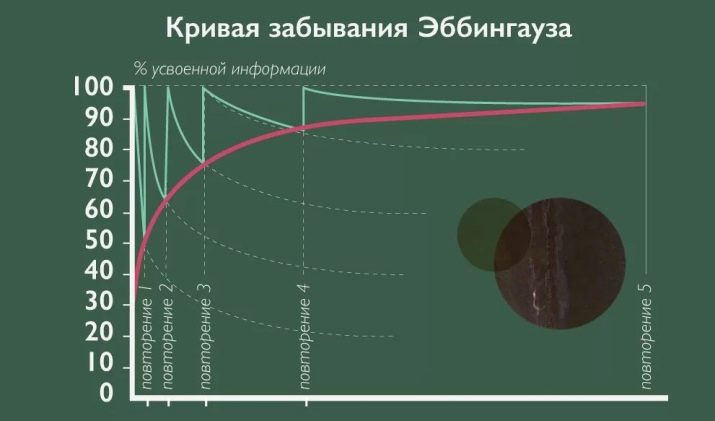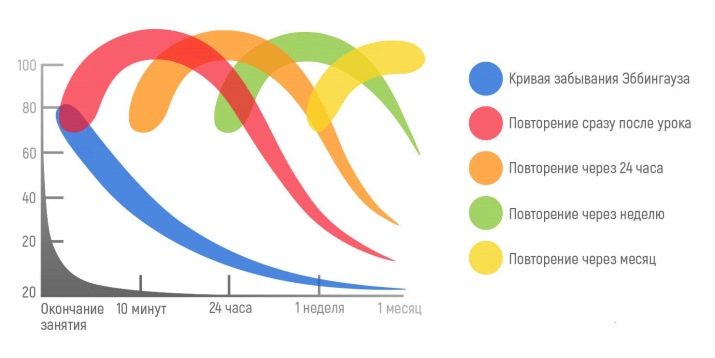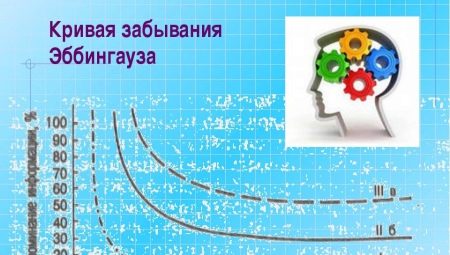How can you acquire the necessary information once and for all, how not to put off unnecessary knowledge in your head? Surely such questions torment not only students and representatives of mental work. The answer back in the 19th century was given by German psychologist German Ebbinghaus. He built the so-called "curve of forgetting."
What it is?
The German was interested in how a person’s memory works, what he remembers and forgets in the first place, and what is more difficult. In order to understand this process, the scientist conducted various experiments. To start, he instructed his wards to learn a number of completely meaningless syllables. He composed them from two consonants and one vowel.
One of the conditions was complete nonsense - combinations of sounds should not cause association with any existing word. Therefore, he suggested such syllables as “ken”, “hut”, “zyf”, “chuts”, “fute” and so on.
The task of the subjects was to remember them one hundred percent and pronounce without a hesitation. Moreover, this was always done at the same time, under the same external conditions.
Thus, an enthusiastic psychologist tried to exclude factors of influence on the process of memorization from the outside - nothing affects the process itself.
If the set of meaningless words ends, then the scientist changed their places and asked those present to learn them. After the participants in the experiment coped with the task, they had yet another test. Repeat unrelated speech after a certain time. So Herman Ebbinghaus opened his curve, which reflects the process of forgetting information by a person. The graph is as follows.

Most quickly, our brain parted with information within an hour after receiving it. He cuts off a large half - about 60% unnecessary information. After 10 hours, he leaves only 35% of the text we have learned. But then the process slows down a lot. Even after 6 days, approximately 20% remains in the head received a set of syllables almost a week ago.
Interestingly, this result remains practically unchanged and in a month. The brain will still produce 20% of the set of sounds. However, this was not the only goal of the study.
There were several tasks.
- To study how much, in principle, the human brain is ready to contain.
- Find out what needs to be done in order to extend the storage time of this information. The German specialist used the repetition method for this.
- Set repetition periods for better memorization of information.
- Find out how information should be located so that it is easier to remember.
Repetition Techniques
To violate the laws of forgetting obtained by constructing his curve, Ebbinghaus deduced another rule - the preservation of information received.
In the Russian interpretation, it sounds like this: "repetition is the mother of learning."
Now psychologists are advising two repetition schedules. The first is optimal for those who needs to cope with the task quickly, and the information they received does not have to remain in memory forever.

The second is more suitable for those who have time to study and the need to use this knowledge for many years.
The "quick" way is designed for two days. The scheme is as follows.
- The first replay is done immediately after the book is closed.
- Repeat the second must be done after 20 minutes.
- The third repeat should take place 8 hours after the second.
- The fourth repeat is carried out exactly one day after the third.
The method for a longer and more thorough memorization at first is not much different from what is "faster", but then be more attentive and patient, everything looks like this.
- The first repeat is carried out immediately after reading.
- Repeat the second one in 20 minutes. It is possible to increase the interval to half an hour.
- The third happens the next day.
- Repeat the fourth after another 2 weeks. Perhaps an increase in the interval to 3 weeks.
- The fifth repetition must be done after 2 months. Perhaps an increase in the interval to 3 months.
But if you need to “prescribe” some knowledge in your memory for a long time, a scheme is suitable for you, developed by Americans Bob Sullivan and Hugh Thompson. To use such a scheme, however, it is worth entering all the dates of the performance into the diary. The one on your phone will also work and will be even more convenient, an electronic diary will give you a signal for action.

The graph looks like this.
- The first repetition is carried out 5 seconds after reading the information you need.
- The second repetition is made after another 25 seconds.
- The third repetition must be done 2 or 3 minutes after the second.
- The fourth happens after 10 minutes.
- Do the fifth repetition after another hour.
- Sixth do not forget to produce after 5 hours.
- Repeat number 7 should take place in a day.
- Repeat the eighth exercise after 5 days.
- Repetition number 9 occurs when another 25 days have passed (that is, a month after the first acquaintance with the material).
- Repeating the tenth is carried out after another 4 months.
- Repetition number 11 is final. To be done after 2 years.
If you use this schedule, then the information you learned will remain with you until the end of your life.
There are several more tricks that the human brain could not hide from scientists.

Patterns of memorization
You can more effectively use the development of scientists in terms of facilitating memorization, if you know exactly what patterns exist in memorizing information. There are several of them, they are quite simple.
- A person remembers more and better meaningful texts than the same Ebbinghaus syllables, for example. I wonder if all of his subjects experienced before the end. Perhaps some could not withstand such an attack on the brain. The so-called “cramming” is far less effective than meaningful memorization.
- The amount of information and the pace of memorizing it are not directly dependent on each other. That is, to learn two poems is not at all twice as difficult as one. This will require more time and energy than if you simply multiply both by two. The more, the longer and harder.
- The number of repetitions should be limited. Rather, there will be no sense from excessive zeal. It’s not worth reading the passage from the book that you have already read through to the holes for the hundredth time. The result will not differ from the one you received after the twentieth repetition, it will not get better.
- The information that we really need is stored in our head much longer than the information that we need only to pass the exam. Therefore, if you want to remember something well, find practical, subsequent application in life.
- The volume of information stored in a certain period of time will be greater if this information is diverse. Change the topics of tasks, alternate them, and then it will be easier for you to cope.
- It is better to remember what is at the beginning and closes the material. Check for yourself, ask someone to make you a list of 10 any words. No one to ask? Use the following set: "A light bulb, a keyboard, a forest, a shop, a school desk, a rag, a head, a computer, a broom, a bed." Close your eyes and try to reproduce what you read.
With a high degree of probability, the first thing that comes to your mind will be the words "light bulb" and "bed". By the way, the discovery of this pattern is also attributed to Hermann Ebbinghaus. In his writings, it is called the edge effect.












